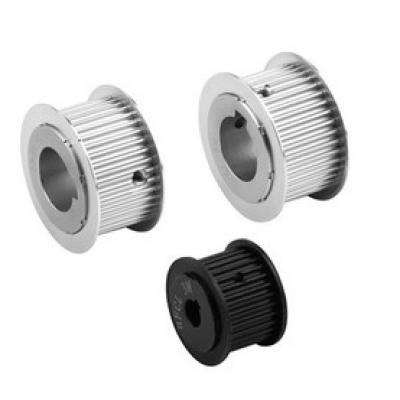How to upgrade the basic industrial chain sprocket
Upgrading a basic industrial chain sprocket involves several key steps and considerations to ensure efficiency, durability, and performance. Here's a detailed guide on how to achieve this:1. Assess the Current Sprocket System
Inspection and Analysis
Wear and Tear: Check for signs of wear, such as elongated sprocket teeth or excessive noise.
Alignment: Ensure the sprocket is properly aligned with the chain and other components.
Material Quality: Assess the material of the existing sprocket (e.g., carbon steel, stainless steel) and its suitability for your application.
2. Determine the Upgrade Goals
Performance Improvements
Load Capacity: Enhance the sprocket's ability to handle greater loads without deformation.
Speed: Optimize for higher operational speeds if necessary.
Efficiency: Reduce friction and energy consumption.
Durability Enhancements
Wear Resistance: Choose materials or coatings that reduce wear and extend the sprocket's life.
Corrosion Resistance: Opt for corrosion-resistant materials if the sprocket operates in a harsh environment.
3. Select Upgraded Materials and Coatings
Materials
Hardened Steel: Offers improved wear resistance.
Stainless Steel: Provides excellent corrosion resistance.
Alloy Steels: Balance between strength and toughness.
Coatings
Nitriding: Increases surface hardness and wear resistance.
Chrome Plating: Enhances corrosion resistance and reduces friction.
Powder Coating: Offers both corrosion protection and aesthetic improvement.
4. Design Considerations
Tooth Profile
Optimized Tooth Shape: Design the tooth profile to match the chain, minimizing stress concentrations.
Pitch Accuracy: Ensure the pitch (distance between teeth) is precise to avoid chain skipping.
Weight Reduction
Lightweight Materials: Use high-strength, lightweight materials like titanium or advanced composites.
Hollow Sprockets: Design sprockets with cutouts to reduce weight without compromising strength.
5. Manufacturing Process
Advanced Techniques
CNC Machining: Ensures high precision and consistency in sprocket manufacturing.
Laser Cutting: Provides accurate and clean cuts for complex sprocket designs.
Heat Treatment: Enhance the sprocket's mechanical properties through processes like quenching and tempering.
6. Installation and Maintenance
Proper Installation
Alignment Tools: Use alignment tools to ensure the sprocket is perfectly aligned with the chain.
Torque Specifications: Follow the manufacturer’s torque specifications to avoid overtightening or loosening.
Regular Maintenance
Lubrication: Regularly lubricate the chain and sprocket to reduce friction and wear.
Inspection: Periodically inspect the sprocket for signs of wear and replace it when necessary.
Tension Adjustment: Ensure the chain tension is optimal to prevent excessive stress on the sprocket.
7. Monitoring and Feedback
Performance Monitoring
Sensors and IoT: Use sensors to monitor sprocket performance in real-time and collect data for predictive maintenance.
Vibration Analysis: Monitor vibration levels to detect misalignment or wear issues early.
User Feedback
Operational Feedback: Gather feedback from operators to understand any practical issues or improvements needed.
Summary
Upgrading an industrial chain sprocket involves a comprehensive approach that includes assessing the current system, setting clear upgrade goals, selecting suitable materials and coatings, considering advanced manufacturing processes, ensuring proper installation and maintenance, and continuously monitoring performance. By following these steps, you can achieve significant improvements in the efficiency, durability, and overall performance of your sprocket system.





